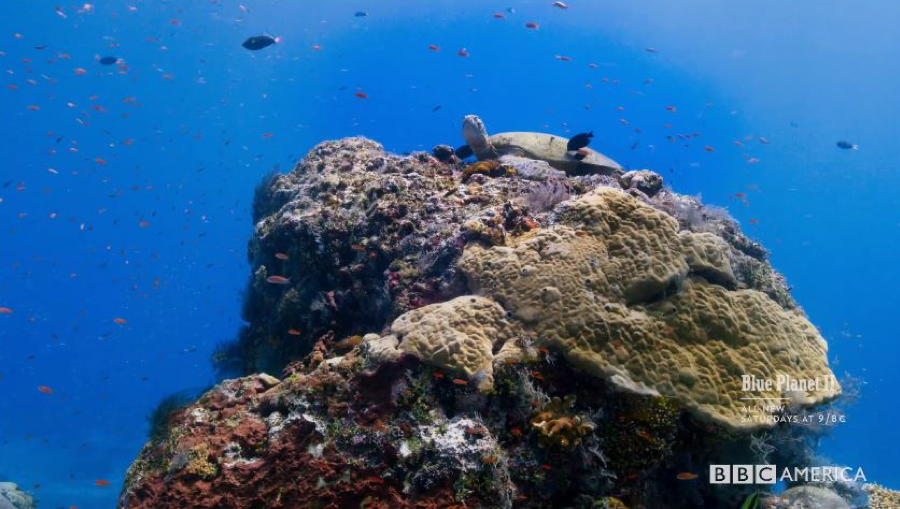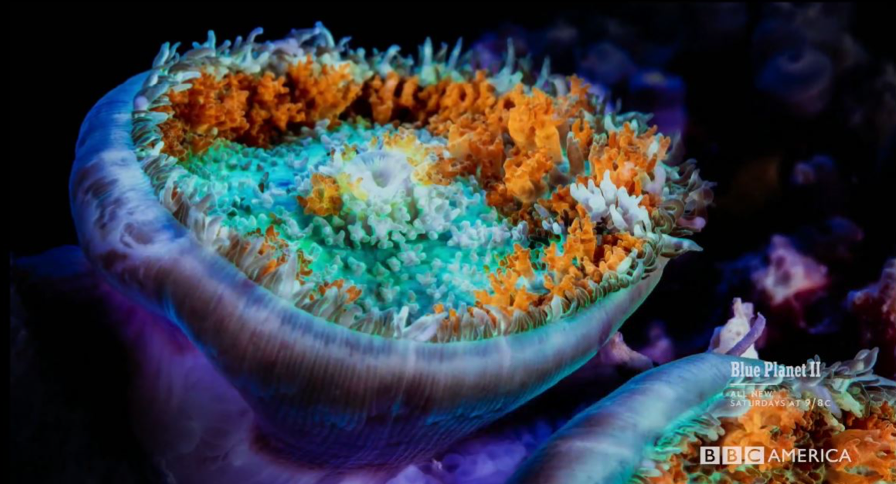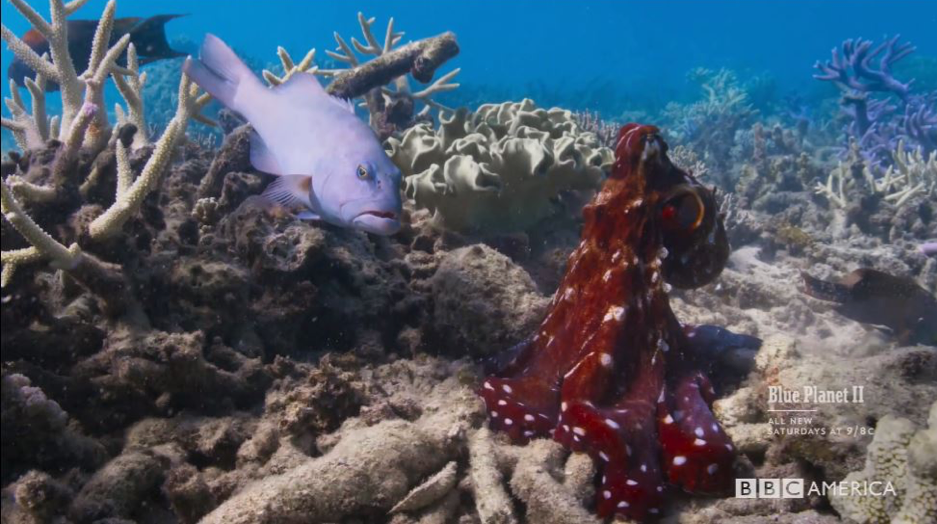A Tale of Two (Coral) Cities: Blue Planet II Recap

‘Coral Reefs’ showcases the highs and lows of life in an aquatic metropolis.
In its third episode, Blue Planet II tells two stories of coral reefs.
The first story is one of undersea cities teeming with life and possibilities. In Coral Reefs, clownfish dart through fluorescent anemones. Cuttlefish change colors to hypnotize their prey. Schools of buckteeth parrot fish chomp through a field of corals.
Visually, there is nothing else like this show, and there’s no better showcase of that than these coral cities. The intensity of the color from the corals coupled with innovative film techniques is truly stunning: one time lapse of coral polyp tentacles coming out at night is particularly impressive. Even just watching on a small computer screen, I found myself getting pulled into this vibrant underwater world.

Impressive as the technology may be, it’s the way the filmmakers manage to humanize even the most unlikely creatures that will stay with you. My personal favorite moment of the episode was when an octopus and a grouper formed an unlikely alliance to catch their prey. The octopus uses its tentacles to reach into the crevasses that the grouper couldn’t get to, while the grouper catches the fish as they swim to escape. They’re a mismatched pair: the stocky, spotted grouper with raggedy teeth, and the vibrant, flowing octopus, but somehow, it works. Now that’s a buddy cop movie I would watch- a loose cannon octopus who doesn’t play by the rules unexpectedly partnered with a desk-grouper who’s a week away from retirement? I’d like ten tickets please.

However, it’s not all fun and games in coral city. The second story the episode tells is darker and more urgent.
“In recent years, it’s thought that half the world’s coral reefs have been affected by bleaching, including, since 2016, around two thirds of the shallow water corals on Australia’s Great Barrier Reef,” says Attenborough. “These once crowded, submarine cities are reduced to bleak ruins, and many of their inhabitants left homeless.”
The episode focuses primarily on the threat of coral bleaching caused by rising ocean temperatures. Attenborough explains that an increase of only a couple of degrees for a few weeks can lead to permanent bleaching: even in the time it took to film the series, many of the healthy corals the crew initially visited had succumbed to permanent bleaching.
Bleaching is just one of a plethora of interconnected threats facing coral reefs. As humans continue to emit carbon dioxide in the atmosphere, the ocean absorbs the excess carbon, leading to seawater that is more acidic. This change in pH makes it more difficult for corals to build the physical structure of the reef in the first place. Scientists have been studying ocean acidification and the effect it has on corals
Last month, a new threat to corals made headlines. A recent study linked plastic pollution in the Pacific Ocean to a massive increase in disease susceptibility in coral reefs. The findings show that the incidence of disease grows 20-fold when corals become entangled in plastic waste. When we think of ocean trash, the first image that probably comes to mind is that of the Great Pacific garbage patch, not corals entangled in plastic wrappers. Even so, it’s a problem that presented itself in this episode.
In one scene, a saddleback clownfish is looking for somewhere to lay its eggs. One of the options it finds is a plastic bottle, coated in algae. It’s a casual appearance—the plastic bottle is presented as a feasible option, along with a shell and a coconut—but it’s the casualness of it that’s alarming. In many ways, plastic has become just an average part of life under the sea. It’s important to be reminded that no, this is not normal, and yes, it has consequences. This is why Ocean Conservancy leads the world’s largest volunteer effort on behalf of our ocean. Since 1985, the International Coastal Cleanup has collected over 228 million pounds of trash, preventing it from joining the nearly 8 million metric tons of plastics that flow into the oceans annually.